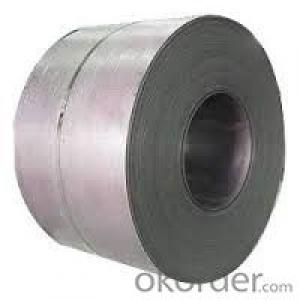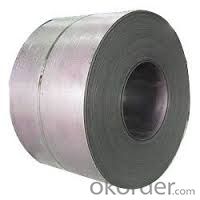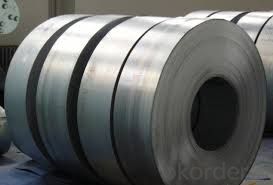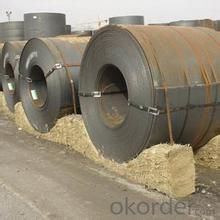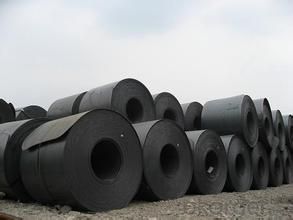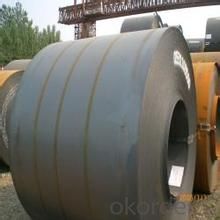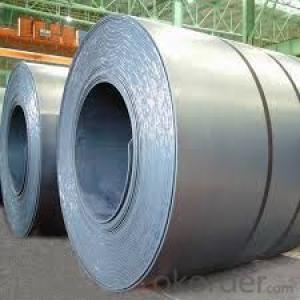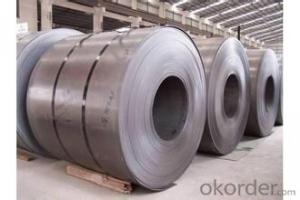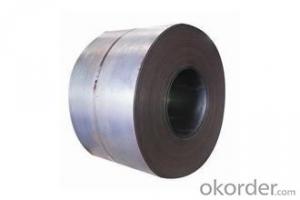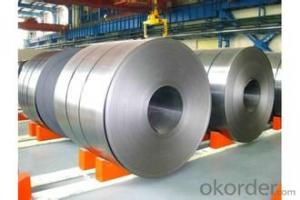Hot Rolled Steel Coil/Sheet/Strip/Sheet /Steel - G3131-SPHC
- Loading Port:
- China main port
- Payment Terms:
- TT OR LC
- Min Order Qty:
- 30 m.t.
- Supply Capability:
- 500000 m.t./month
OKorder Service Pledge
OKorder Financial Service
You Might Also Like
Specifications
hot rolled carbon steel coils
A.best quality with competitive price.
B.advantage equipment,produce carog as your requirements
Product Description:
Rolledsteel is a production which not easy rust,acid resistance and corrosion resistance,so it is widely used in light industry,heavy industry,daily necessities and the decoration industry.
Hot Rolled Stainless Steel Coil 304 Physical Properties
Tensile strength σb (MPa) ≥ 520
the conditions yield strength σ0.2 (MPa) ≥ 205,
elongation δ5 (%) ≥ 40
Reduction of ψ (%) ≥ 50,
hardness: ≤ 187
HB; ≤ 90
HRB; ≤ 200H
We can ensure that stable quality standards are maintained, strictly meeting both market requirements and customers’ expectations. Our products enjoy an excellent reputation and have been exported to Europe, South-America, the Middle-East, Southeast-Asia, Africa and Russia etc.. We sincerely hope to establish good and long-term business relationship with your esteemed company.
Our Hot-Rolled Steel Sheets and Coils are applied to a wide range of uses such as automobile, electrical appliance, machinery manufacturing, container manufacturing, shipbuilding, bridge, pipeline, and receive high acclaim from our customers for its excellent quality.
- Q: How do steel coils contribute to acoustic performance in buildings?
- Steel coils contribute to acoustic performance in buildings by providing sound insulation and reducing noise transmission. The dense and solid nature of steel helps to block and absorb sound waves, preventing them from passing through the building structure. This results in a quieter and more comfortable indoor environment, improving the overall acoustic quality of the building.
- Q: benchmade mpr with m390 steel knife. Is it better than d2 s30v or 154cm steel?
- From what I understand m390 is a new steel (at least for benchmade) so there doesn't seem to be a consensus on how it performs. Looking at the table, it should be very corrosion resistant. I'd guess it could be classified as a stainless steel. Sorry I don't have more info for you. EDIT: here's a link from the steel manufacturer. I hope this info helps.
- Q: Procedures for sharpening a knife with the stone and the steel?
- If you are lucky and have a whet stone block you need some patience water or light machine oil. Take your time and work in circular motion at a slight angle as to put an edge where you want it. I tend to think of it like polishing and work the length of the blade. If you work with a steel you are suppose to pull the blade across the steel at an angle. I have forgotten the angle but if you attempt this you soon find that you can associate a certain feel of the way the blade crosses the steel and know when you have it right and check the blade periodically until you have it the way you want it. There are some other sharpeners out there where you just draw the blade thru a device and they work as well. I was taught the old ways with the stone and the steel and don't know the actual prescribed angles but can tell you that you will be able to eye ball the angle and you don't have to use heavy pressure. These processes won't work on a serrated blade!
- Q: what pokemon are week to steel type pokemon like lucario? help please, and thank you.
- Rock pokemon are weak against steel type moves.
- Q: What is the average shelf life of a painted steel coil?
- The average shelf life of a painted steel coil can vary depending on various factors such as the quality of the paint, environmental conditions, and storage methods. However, on average, a well-maintained painted steel coil can have a shelf life of 10 to 20 years.
- Q: Yes, I understand it can weaken steel greatly. But can it MELT steel? (key word: melt)
- Jet fuel is kerosene in 6 grades and highly filtered. can it melt or weaken steel? No, it preserves it.
- Q: How are steel coils labeled and identified?
- To ensure accurate tracking and handling of steel coils throughout their journey, various methods are employed to label and identify them. The labeling and identification process typically consists of the following steps: 1. Initial Marking: At the outset, the manufacturer's name or logo is affixed to the steel coil, enabling easy identification of the producing company. 2. Unique Identification Number: A distinct identification number, commonly known as a coil number, is assigned to each steel coil. This number is often engraved or imprinted on the surface of the coil and serves the purpose of tracking and managing inventory. 3. Specifications of Size and Weight: Labels indicating the size and weight specifications of the steel coils are attached. This information aids in determining the coil's dimensions and weight capacity, ensuring appropriate handling and transportation arrangements. 4. Indication of Grade and Material: The labeling typically includes information about the grade and material composition of the steel coil. This essential data offers insights into the properties and quality of the steel, guaranteeing its correct utilization in manufacturing processes. 5. Heat or Lot Number: Steel coils may also bear a heat or lot number, which denotes the production batch from which the coil originated. This information contributes to traceability and quality control, simplifying identification in the event of any issues or defects. 6. Barcodes or QR Codes: Many steel coils now feature barcodes or QR codes that can be scanned using automated systems. These codes contain all pertinent information about the coil, streamlining data capture and management throughout the supply chain. Proper labeling and identification of steel coils are of utmost importance for efficient logistics management, inventory control, and quality assurance. By implementing these identification methods, manufacturers, distributors, and end-users can effortlessly track, handle, and utilize steel coils in a secure and productive manner.
- Q: How is it used easy 10 points just tell me how its used or any intersting facts this is for my comp science paper lol. I know what the hell does steel have to too do with computers he is a Fg! Please be descriptive THANKS! FAST ANSWERS TOO it 9pm bedtime for a 14 year old lol..
- steel is used for cars and trains. one of the largest steel manufacturers is in my town its called CarTech its in reading pa.
- Q: We have a stain from a pot or bowl in our new expensive stainless steel sink. It looks like a water mark that happens when you leave a glass on a table without a coaster. It's a mark in the shape of the bowl or pot that was there. We left it there overnight:( It's not rust either. Help!
- Do Not use anything abrasives. You will have problems forever if you do. That will ruin the finish. BarKeeper's Friend has been a life saver for me for the cheap sink that was put into my place. Was shocked that it made my sink almost look new again.
- Q: What are the common surface finishes available for steel coils?
- The common surface finishes available for steel coils include hot-dip galvanized, galvannealed, electro-galvanized, and painted finishes.
Send your message to us
Hot Rolled Steel Coil/Sheet/Strip/Sheet /Steel - G3131-SPHC
- Loading Port:
- China main port
- Payment Terms:
- TT OR LC
- Min Order Qty:
- 30 m.t.
- Supply Capability:
- 500000 m.t./month
OKorder Service Pledge
OKorder Financial Service
Similar products
Hot products
Hot Searches
Related keywords
